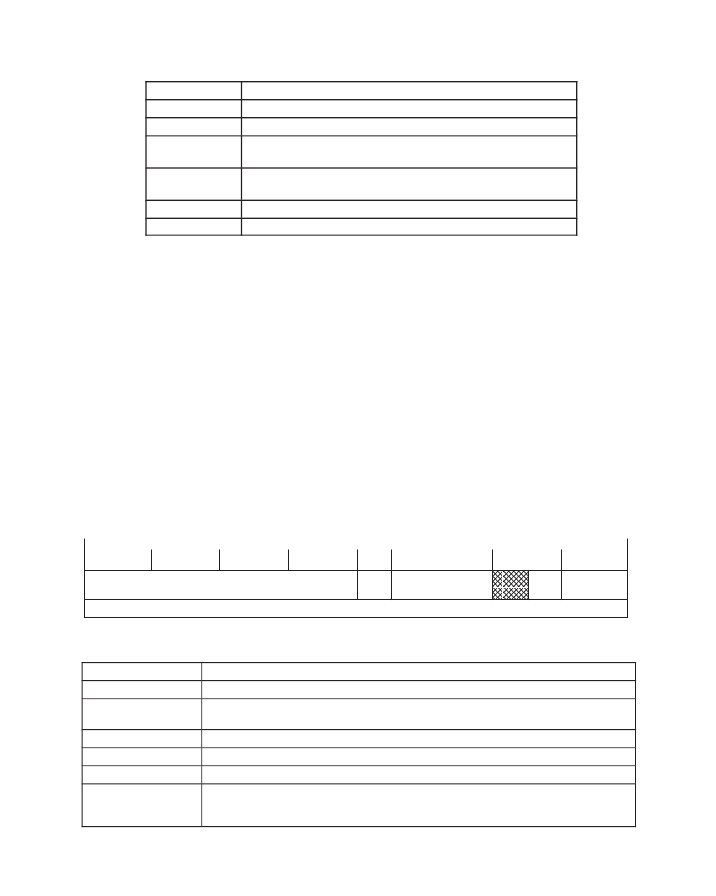- 您現(xiàn)在的位置:買賣IC網(wǎng) > PDF目錄385949 > TSB42AB4PGE (Texas Instruments, Inc.) IEEE 1394 A CONSUMER ELECTRONICS LINK LAYER CONTROLLER PDF資料下載
參數(shù)資料
| 型號: | TSB42AB4PGE |
| 廠商: | Texas Instruments, Inc. |
| 英文描述: | IEEE 1394 A CONSUMER ELECTRONICS LINK LAYER CONTROLLER |
| 中文描述: | 1394消費(fèi)電子產(chǎn)品鏈路層控制器 |
| 文件頁數(shù): | 76/183頁 |
| 文件大?。?/td> | 798K |
| 代理商: | TSB42AB4PGE |
第1頁第2頁第3頁第4頁第5頁第6頁第7頁第8頁第9頁第10頁第11頁第12頁第13頁第14頁第15頁第16頁第17頁第18頁第19頁第20頁第21頁第22頁第23頁第24頁第25頁第26頁第27頁第28頁第29頁第30頁第31頁第32頁第33頁第34頁第35頁第36頁第37頁第38頁第39頁第40頁第41頁第42頁第43頁第44頁第45頁第46頁第47頁第48頁第49頁第50頁第51頁第52頁第53頁第54頁第55頁第56頁第57頁第58頁第59頁第60頁第61頁第62頁第63頁第64頁第65頁第66頁第67頁第68頁第69頁第70頁第71頁第72頁第73頁第74頁第75頁當(dāng)前第76頁第77頁第78頁第79頁第80頁第81頁第82頁第83頁第84頁第85頁第86頁第87頁第88頁第89頁第90頁第91頁第92頁第93頁第94頁第95頁第96頁第97頁第98頁第99頁第100頁第101頁第102頁第103頁第104頁第105頁第106頁第107頁第108頁第109頁第110頁第111頁第112頁第113頁第114頁第115頁第116頁第117頁第118頁第119頁第120頁第121頁第122頁第123頁第124頁第125頁第126頁第127頁第128頁第129頁第130頁第131頁第132頁第133頁第134頁第135頁第136頁第137頁第138頁第139頁第140頁第141頁第142頁第143頁第144頁第145頁第146頁第147頁第148頁第149頁第150頁第151頁第152頁第153頁第154頁第155頁第156頁第157頁第158頁第159頁第160頁第161頁第162頁第163頁第164頁第165頁第166頁第167頁第168頁第169頁第170頁第171頁第172頁第173頁第174頁第175頁第176頁第177頁第178頁第179頁第180頁第181頁第182頁第183頁

511
Table 511. Acknowledge Buffer Bit Descriptions for Asynchronous Packets
BIT NAME
DESCRIPTION
ACK_ERR
Acknowledge error
ACKCODE
Acknowledge code (See Table 510)
NODEID
1. destination_ID
2. Not valid for asynchronous streaming
PACKETID
1. tlabel and retry code for async
2. Tag and channel for asynchronous streaming
TCODE
tCode
ACKCNT
Number of ACKs available
The returned acknowledge is always appended with a bit that indicates the validity of the acknowledge that
was received. This is the ACK_ERR bit shown in Figure 58. For the case where no acknowledge was
returned or the ACK could not be verified, the ERR bit is set to a 1 and the 4-bit acknowledge field should
be interpreted as indicated in Table 510. Note that the count field still increments in this case just as if an
acknowledge had been received correctly.
Busy retries (ACK codes 4, 5, and 6) should only be loaded into the buffer if the automatic busy retry limit
has timed out. Otherwise the buffer could overflow with busy retries while waiting for a node to respond. If
an ACK code other than a busy retry is received during the automatic retry, then this ACK is loaded into the
buffer as normal.
5.4
Asynchronous Streams
ceLynx can be configured to send asynchronous streams. These are isochronous packets sent during the
asynchronous period. It is described in the 1394.a standard.
An asynchronous stream packet has a transaction code of 0xA. It is subject to the same arbitration
requirements. Asynchronous stream packets can be routed to the appropriate buffer based on data length
or header 0 (isochronous header) information.
5.4.1
Asynchronous Stream Transmit
Asynchronous streams should only be transmitted from the host port using header insertion mode.
TAG
30 29 28 27 26 25 24 23 22 21 20 19 18 17 16 15 14 13 12 11 10 9
8
7
6
5
4
3
2
1
0
31
ISOCHRONOUSDATA
SYNC
CODE
CHANNUM
DATALENGTH
Figure 59. Asynchronous Stream Transmit Format
Table 512. Asynchronous Stream Transmit Functions
FIELD NAME
DESCRIPTION
DATALENGTH
The DATALENGTH field indicates the number of bytes in the current packet.
TAG
The TAG field indicates the format of data carried by the isochronous packet
(00 = unformatted, 01 – 11 are reserved).
CHANNUM
The CHANNUM field carries the channel number with which the current data is associated.
SPD
The speed code of the current packet: 00=100 mbits/s, 01=200 mbits/s, 10=400 mbits/s
SYNC CODE
The SYNC CODE field carries the transaction layer-specific synchronization bits.
ISOCHRONOUSDATA
The ISOCHRONOUSDATA field contains the data to be sent with the current packet. The first
byte of data must appear in byte 0 of the first quadlet of this field. If the last quadlet does not
contain four bytes of data, the unused bytes should be padded with zeros.
相關(guān)PDF資料 |
PDF描述 |
|---|---|
| TSB43AA82A1 | 1394 integrated PHY and link layer controller(1394集成PHY和鏈路層控制器) |
| TSB81BA3I | IEEE 1394b THREE-PORT CABLE TRANSCEIVER/ARBITER |
| TSE-0155-32S-P1-3 | SINGLE MODE SINGLE FIBER TRANSCEIVER |
| TSL230 | PROGRAMMABLE LIGHT-TO-FREQUENCY CONVERTERS |
| TSL235(中文) | Programmable Light-To-Frequency Converter(光頻轉(zhuǎn)換器) |
相關(guān)代理商/技術(shù)參數(shù) |
參數(shù)描述 |
|---|---|
| TSB42AC3 | 制造商:TI 制造商全稱:Texas Instruments 功能描述:General purpose link layer ideal for a wide-range of applications |
| TSB42AC3IPZT | 制造商:TI 制造商全稱:Texas Instruments 功能描述:General purpose link layer ideal for a wide-range of applications |
| TSB42AC3PZT | 功能描述:1394 接口集成電路 High Perf 1394-1995 Link Layer RoHS:否 制造商:Texas Instruments 類型:Link Layer Controller 工作電源電壓: 封裝 / 箱體:LQFP 封裝:Tray |
| TSB42AC3PZTG4 | 功能描述:1394 接口集成電路 High Perf 1394-1995 Link Layer RoHS:否 制造商:Texas Instruments 類型:Link Layer Controller 工作電源電壓: 封裝 / 箱體:LQFP 封裝:Tray |
| TSB432 | 制造商:Ssac 功能描述: |
發(fā)布緊急采購,3分鐘左右您將得到回復(fù)。